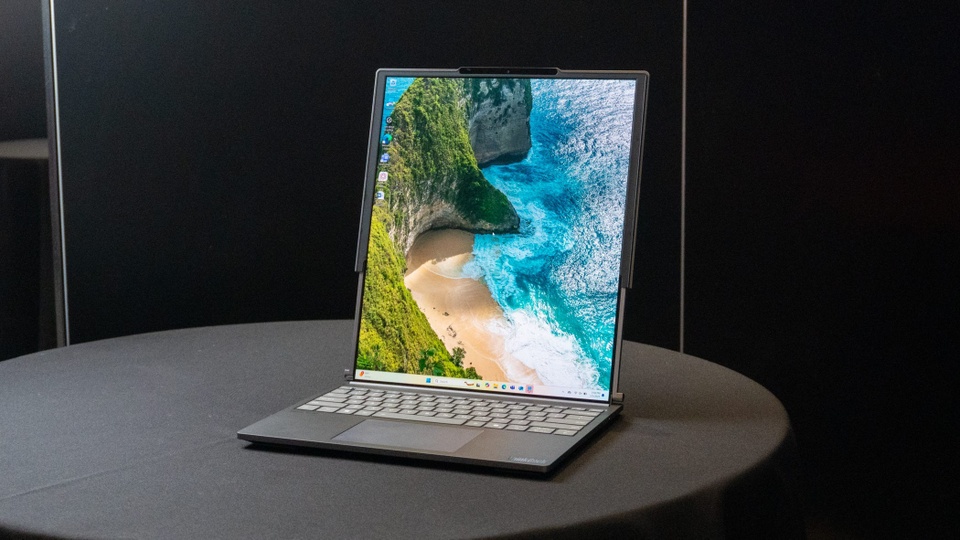 |
Lenovo's rollable laptop uses an OLED panel from Samsung. Photo: The Shortcut . |
At CES 2025, Samsung Display demonstrated a 14-inch OLED screen that can be rolled up to 16.7 inches in size. The first laptop model using this screen will be sold by Lenovo in June with a starting price of $ 3,500 .
Previously, LG Electronics introduced a transparent OLED TV in late 2024, creating the feeling of images floating in mid-air. The 77-inch version is expected to cost $ 60,000 .
Faced with growing competition from Chinese companies like BOE and Visionox, Samsung and LG are looking to regain market share with new OLED display technologies.
Risk of falling behind China
After dominating the global liquid crystal display (LCD) market, LG and Samsung have been developing OLED displays since 2010 for a variety of purposes from smartphones, cars to TVs.
Data from display market research firm DSCC shows that Samsung will lead the OLED market in 2024 with a market share of 42.2%, followed by LG Display (23.9%). In other words, these two companies hold more than half of the OLED panel market (66%).
Still, LG and Samsung couldn’t avoid the rise of Chinese rivals. 2024 marked the first time Samsung’s OLED panel market share fell below 50%. By contrast, BOE and Visionox’s market shares reached 13.2% and 7.3%, respectively. Chinese companies held a combined market share of 33%.
According to Nikkei , BOE is building an OLED panel factory with the aim of catching up with Samsung, expected to be operational from 2026. The company has invested $8.7 billion in the factory, expected to produce advanced 8.6 generation OLED panels.
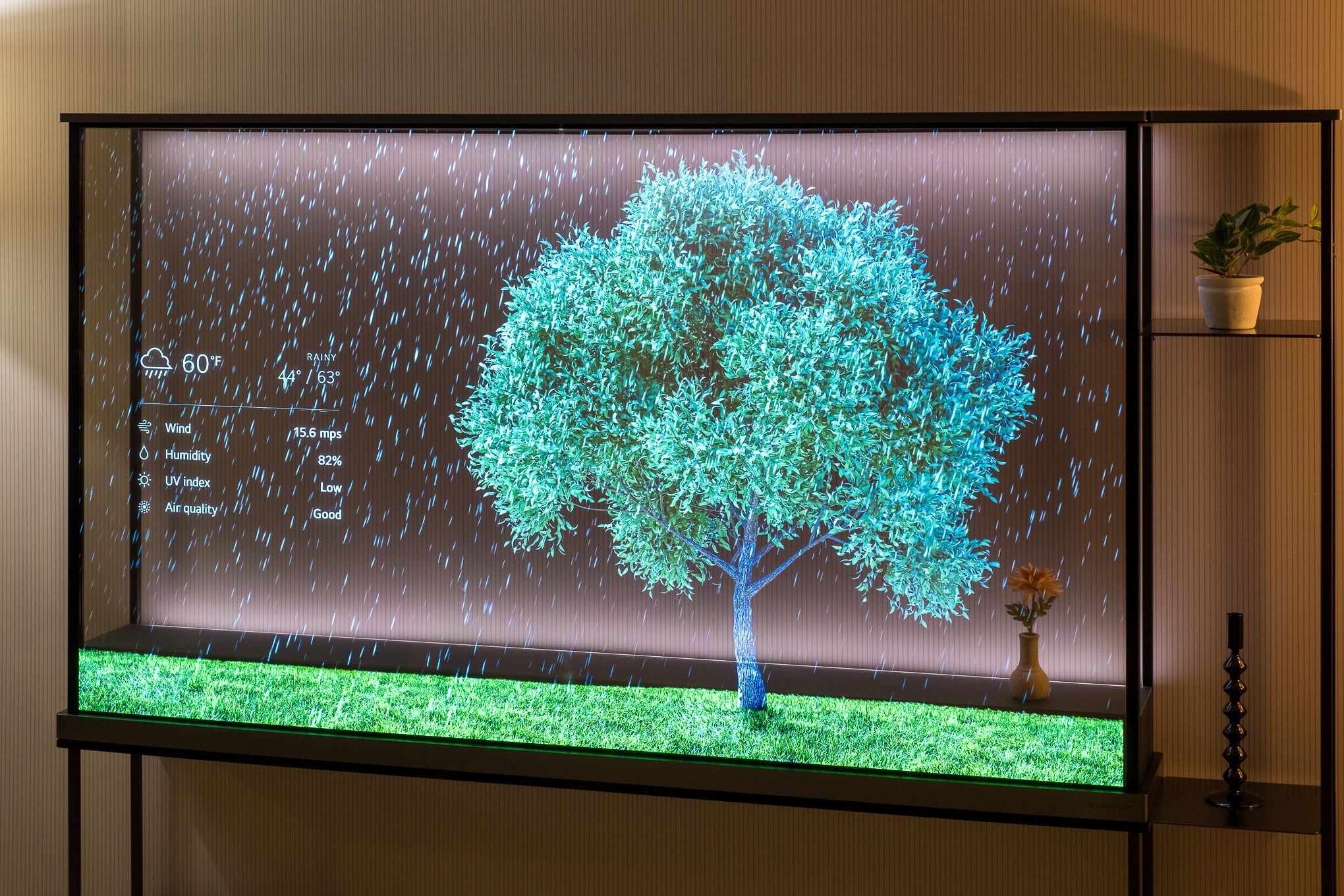 |
TV using LG's transparent OLED panel. Photo: The Verge . |
Chinese companies are taking advantage of small-sized panels to increase market share, such as smartphone displays, because they are relatively easy to produce.
“If we talk about smartphone display panels alone, China will surpass Korea in terms of production capacity in the next few years,” said Yoshio Tamura, vice president of research at DSCC .
In fact, Korean companies are struggling in the display sector. In early January, LG Display announced an operating loss of $391 million in 2024.
This is the company's third consecutive year of losses, especially as its LCD panel business has seen fierce price competition from China.
Samsung’s display division posted operating profit of $2 billion in the January-September period, down 18.6% from a year earlier. Analysts expect full-year profit to decline for a second straight time.
Competitive advantage
Samsung and LG aim to surpass China in the high-end panel segment. According to Tamura, the advantage of Korean companies comes from “high quality and variety”.
“No Chinese company has the capacity to mass produce large-size OLED panels,” LG Display said at a press conference in Seoul, South Korea. The gap in technology between South Korea and China is “about 10 years.”
LG has sold its main LCD display factory in China in 2024. The proceeds are expected to be used to develop OLED technology in all areas, not just large-size panels.
Samsung is also investing $2.8 billion in OLED panel production lines at a key plant. The company is working on developing mid-sized panels for PCs and other purposes.
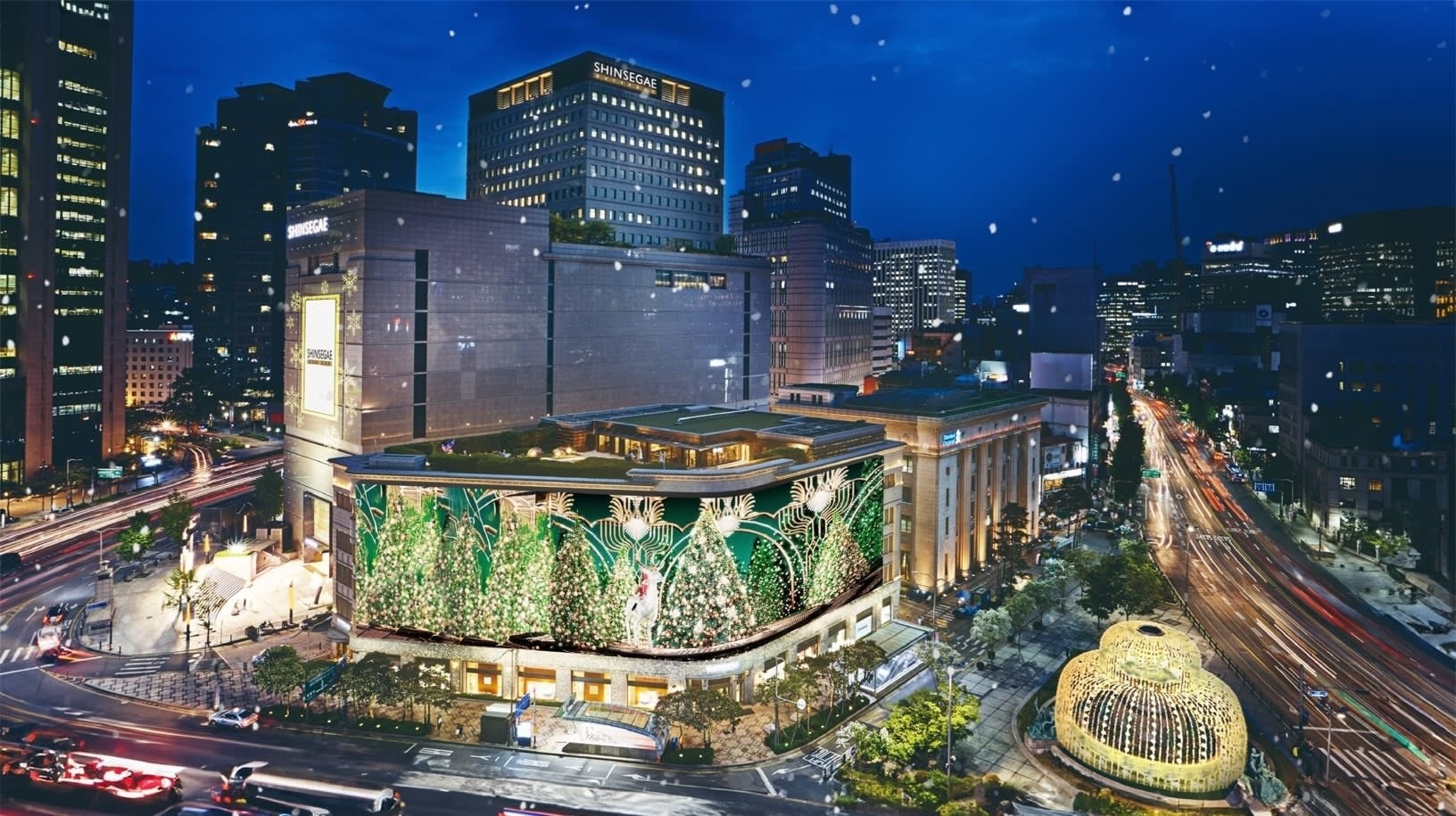 |
Samsung's giant screen in front of a shopping mall in Seoul. Photo: Samsung . |
In recent years, Samsung has also focused on developing displays for the digital signage market.
Late last year, the company installed a giant screen outside a store in the Myeongdong shopping district. Measuring more than 71 meters wide and 17 meters high (nearly three basketball courts), the screen became a popular tourist attraction.
Samsung has held the number one position in the digital signage market since 2009, and the market size is expected to continue to grow.
“We expect the market size to grow at an average of 6.5% per year until 2028, but new technologies could make the market grow faster,” said Jeong Hoon, vice president of Samsung’s video display business.
Samsung also produces a variety of panels for businesses, hotels and restaurants, as well as safety warning displays for government agencies.
“Because we produce panels on demand for each job, our profit margins in this area are much higher than in consumer products,” Jeong said.











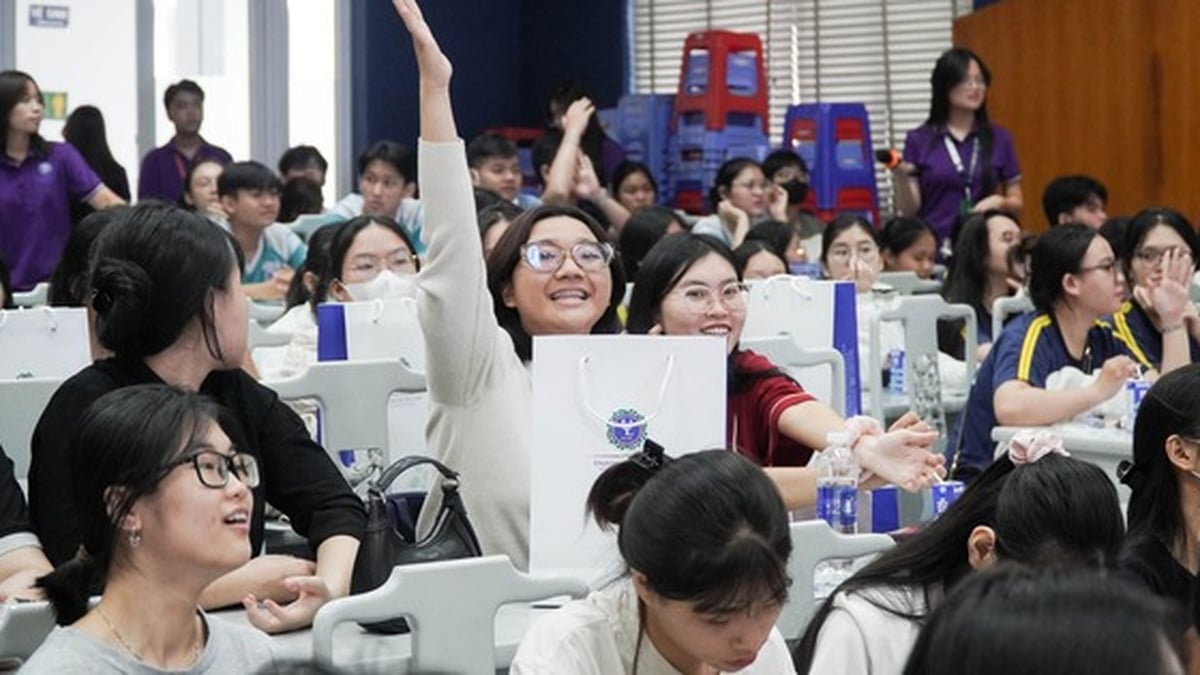















![[Photo] National Assembly Chairman Tran Thanh Man visits Vietnamese Heroic Mother Ta Thi Tran](https://vphoto.vietnam.vn/thumb/1200x675/vietnam/resource/IMAGE/2025/7/20/765c0bd057dd44ad83ab89fe0255b783)










































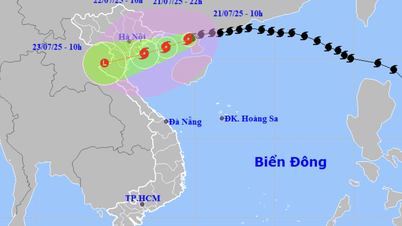







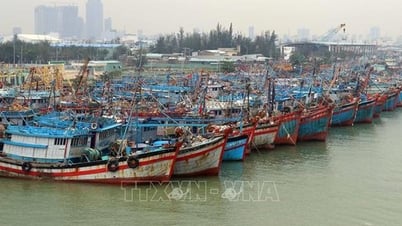





















Comment (0)